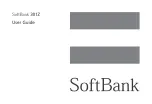
SDT 5000 User Manual
Document MBUD-0109v11
5. HARDWARE INTERFACES
See Appendix B for a diagram illustrating the SDT 5000 connection guide. This section will discuss
the connections available.
5.1 Power and Ignition
12 Volt nominal power is applied to pin 1 (VBAT) of J2. This input supports 9 volts to 26 volts. The
SDT 5000 requires 2.0 amps while transmitting, and < 100 mA during continuous receive. Low
power modes will reduce the average current considerably. See Section 8, Power Modes, for a
discussion of low power modes.
The ignition line is connected to pin 2 (IGN) of J2. This input is driven to VBAT to maintain power
to the SDT 5000. The ignition line does not need to be connected if switch J4 is set to the ON
position. If the ignition line is controlled by the user the SDT 5000 can be switched off and the
current draw will be less than 1 mA continuous.
The Power Ground is connected to pin 3 (PWR GND) of J2. Power ground is not isolated from
chassis ground. The power ground is NOT distinct from signal ground but power ground provides a
low impedance connection for the power supply ground.
5.2 Test
Port
Test port receive is connected to pin 4 (TST RX) of J5. This input is an RS232 signal level.
Test port transmit is connected to pin 5 (TST TX) of J5. This output is an RS232 signal level.
Test port ground is connected to pin 6 (TST GND) of J5. This is the RS232 signal ground for the test
port.
The test port signals are also routed to the DB9 connector as shown in Appendix C. If the signals are
used in the SDT 5000 interface cable the DB9 connector should not be used.
5.3 Inputs
5.3.1 ANALOG INPUT
The analog input is connected to pin 7 (A IN) of J5. This input will accept a signal of 0 volts to 5
volts maximum.
The analog signal ground is connected to pin 8 (GND) of J5.
5.3.2 DIGITAL INPUT
There are two digital inputs connected to pin 9 (IN 1) and pin 10 (IN 2). These inputs accept a
signal of 0 volts to VBAT maximum. These inputs have a weak pull-up of approximately 100K
Version 1.1, 03/24/06
Page 25
















































